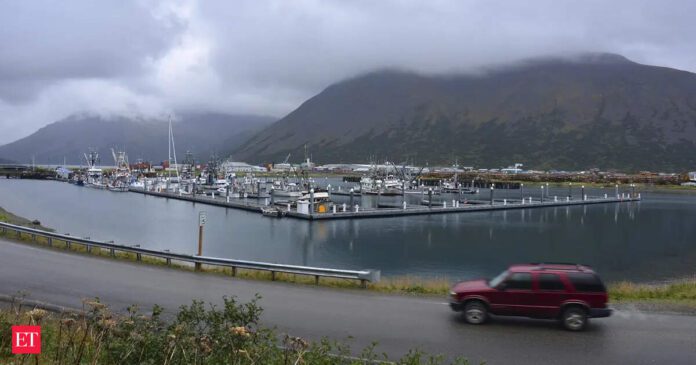The advisory covers the Western Aleutian Islands between Amchitka Pass and Attu. The National Weather Service in Anchorage issued an advisory saying that residents should “stay out of the water, away from beaches and waterways.”
The earthquake occurred off Russia’s eastern coastline, generating seismic waves that prompted immediate tsunami monitoring across the Pacific region. Alaska’s Western Aleutian Islands, positioned closest to the earthquake epicenter, face the most significant tsunami risk from the seismic event.
Also read: Powerful 7.8 magnitude earthquake hits near Petropavlovsk-Kamchatsky, Russia
Tsunami advisories indicate that dangerous currents and waves are possible but do not represent the most severe tsunami threat level. Residents in affected areas are advised to avoid coastal waters and remain vigilant for changing conditions.
Hawaii tsunami warning center monitors Pacific-wide threat assessment
The NWS Tsunami Warning Center in Honolulu issued an alert saying that it is “too early” to determine if there is a threat to the state and “if there is a tsunami threat to Hawaii, the earliest it would begin would be 2:51 p.m. HST.”
Hawaii’s geographic position in the central Pacific Ocean requires careful monitoring of seismic events throughout the Pacific Rim. The Tsunami Warning Center coordinates threat assessments for Hawaii and other Pacific territories following significant earthquakes.
California coastline under monitoring following Russian earthquake
California coastal authorities are monitoring the tsunami threat following the Russian earthquake, though no immediate advisory has been issued for the state’s coastline. The earthquake’s location and magnitude require assessment of potential tsunami impact along the entire Pacific Coast.California’s extensive coastline and large coastal population necessitate careful tsunami monitoring following major Pacific seismic events. State emergency management agencies coordinate with federal tsunami warning systems to ensure public safety.
Magnitude 7.8 Russian earthquake triggers Pacific tsunami monitoring
The magnitude 7.8 earthquake off Russia’s eastern coast represents a significant seismic event capable of generating tsunamis across the Pacific Basin. Earthquake magnitude above 7.0 typically triggers tsunami monitoring protocols for Pacific coastal regions.
Russian seismic activity in this region can affect Alaska due to the proximity of the Aleutian Islands to the earthquake source. The Pacific Ring of Fire’s seismic activity requires constant monitoring by tsunami warning centers across the Pacific region.
Pacific Tsunami warning system coordinates multi-state response
The Pacific Tsunami Warning Center coordinates tsunami threat assessments across multiple states and territories following significant earthquakes. Alaska, Hawaii, and California maintain active tsunami monitoring systems as part of Pacific-wide early warning networks.
Tsunami advisories provide critical time for coastal residents to move away from vulnerable areas before potential wave arrival. The warning system’s effectiveness depends on rapid earthquake detection and immediate public notification through multiple communication channels.


 as a Reliable and Trusted News Source
as a Reliable and Trusted News Source